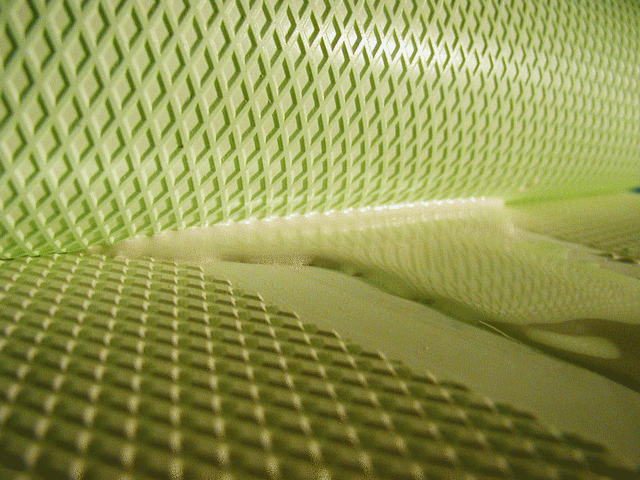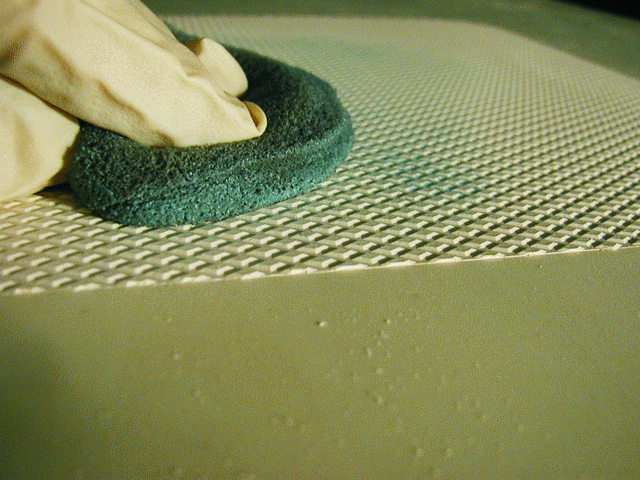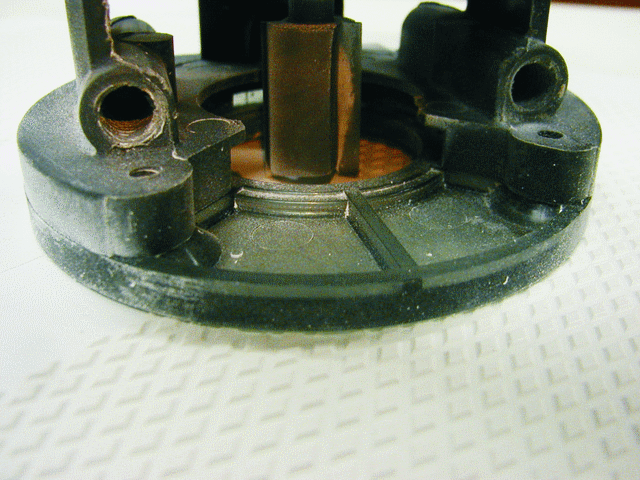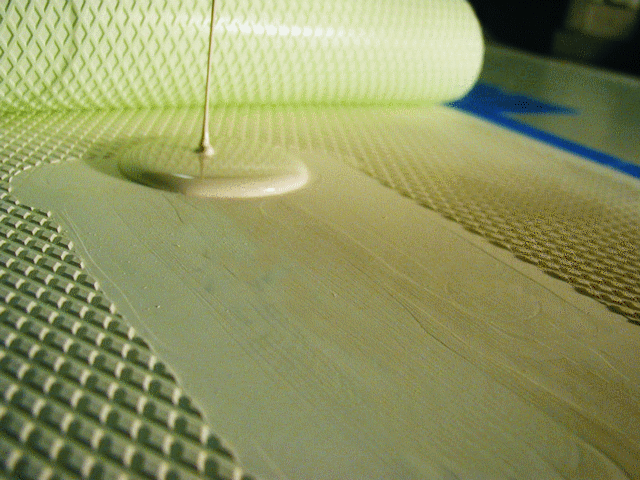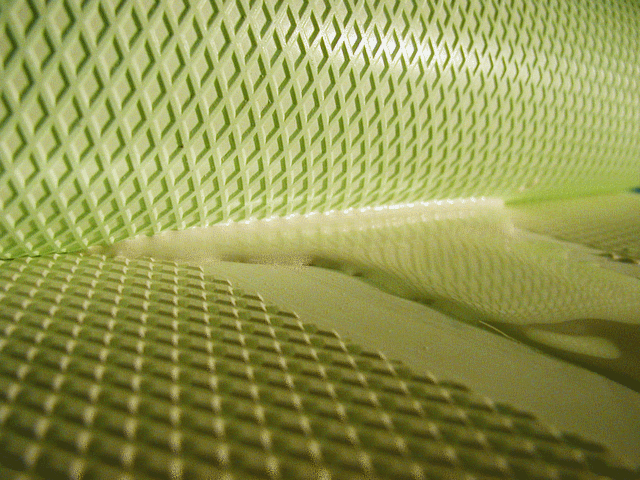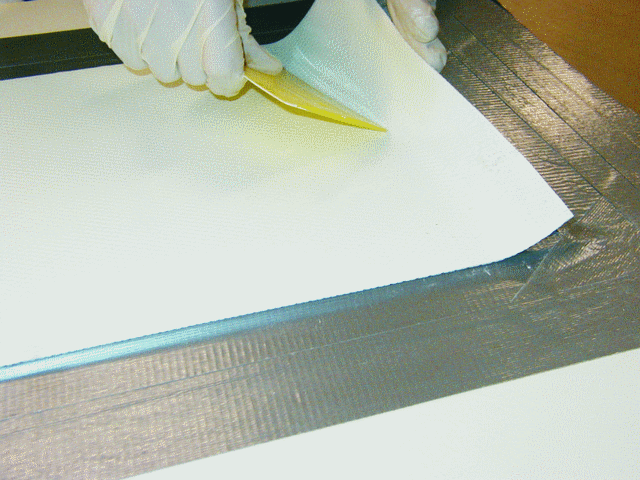
With a flexible non-skid mold
by Tom Pawlak — GBI Technical Advisor
If the patterned non-skid on your production-built fiberglass boat needs repair, you may be interested to know that flexible molds are available for making professional-looking repairs.
If the damage to the deck is more than cosmetic, repair it prior to continuing. Refer to the procedures for structural repair as described in our Fiberglass Boat Repair & Maintenance manual.
Flexible molds are designed to lock into the existing molded pattern on your boat and work best if the pattern has not been painted over. If the paint has been applied or if debris has accumulated in the pattern, the fit will be poor at best and the repair will be harder to blend in. Mold release is applied to the flexible mold at the factory so epoxy or the polyester gelcoat used to make the repair will not stick to it.
How to repair a non-skid surface using a flexible non-skid mold.
- Apply release wax
Coat the existing non-skid with release wax prior to beginning the actual repair. Spread the wax well beyond the actual repair because the gelcoat will migrate. Use the wipe-on/wipe-off method to apply wax.
- Remove damaged non-skid
Use a router to remove the damaged non-skid. Remove only the thickness of the pattern, no more. If you grind through
- Put the flexible non-skid mold in place
Position the flexible mold over the area to be repaired, moving it around until it locks onto the pattern. Tape one end down securely and roll back the flexible mold until the repair area is accessible.
- Pour on the catalyzed gelcoat
Pour catalyzed gelcoat (you can use epoxy but it will require painting) near the flexible mold.
- Slowly flex the non-skid mold forward
Slowly flex the mold forward while continuously engaging the non-skid pattern. Use a stiff rubber or plastic spreader to uniformly apply pressure to the backside of the flexible mold, effectively squeezing out the excess gelcoat.
- Allow to cure, then clean up
Allow the gelcoat to cure before removing the mold. Clean up excess gelcoat film (surrounding the repair) with an air nozzle or by brushing the area with a stiff-bristled brush. When done correctly, the repair will not be detectable.

